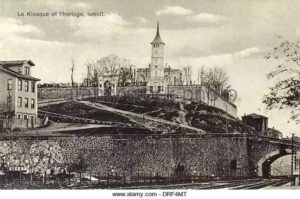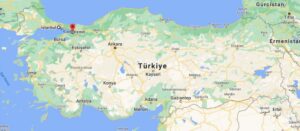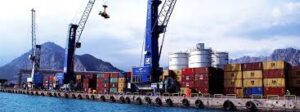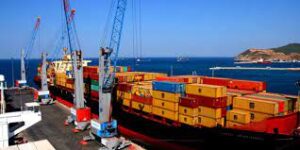
History
Kocaeli is located in the region called Bithynia in ancient times. Megara and Athenians established a settlement named Astakus in 712 BC in the region where Başiskele district is located in the bay today, and the city later called the city of Skylax and its bay as Olbia. While Pausanias referred to Astakus as the name of a Thracian noble, it is known that the son of the sea god Poseidon and the water nymph Olbia in Greek mythology bears the same name.[6] The people of Astokus settled in the region where today’s Izmit district is located in 262 BC. Since it was founded by I. Nikomidis, this city was named Nicomedia. It remained the capital of the country until the collapse of the Bithynia Kingdom.
Emperor Diocletian conquered Nicomedia in 284 and made it the capital of the empire. However, during the reign of Emperor Constantine, Istanbul was made the capital and the city lost its former importance.At the end of the 11th century, Kocaeli came under Seljuk rule. However, during the Crusades, the region was captured by Alexios Komnenos. Kocaeli was conquered by Akçakoca, a margrave during the Orhan Bey period. During the Ottoman period, the city of Nicomedia was first named Iznikmid and then Izmid (Izmit). After the railway reached the city in the 19th century, the commercial and social life in Kocaeli was revived. In 1888, Izmit was made an independent sanjak.
Kocaeli was occupied first by the British on 6 July 1920 and then by the Greeks on 28 April 1921. The city was liberated from occupation on 28 June 1921 during the War of Independence. Kocaeli became one of the fastest developing provinces thanks to industrialization in the republican period. Its proximity to Istanbul and ease of transportation have affected the industrialization of the region. In 1934, The first paper mill was opened in Izmit.
Kocaeli gained the title of metropolitan city with the decree law numbered 504 enacted on September 2, 1993.

Geolocation
Kocaeli province is located in the Çatalca–Kocaeli Section of the Marmara Region, between 29° 22’—30° 21′ east longitude and 40° 31’—41° 13′ north latitude. It is surrounded by Sakarya in the east and southeast, Bursa in the south, Yalova province, Izmit Gulf, Marmara Sea and Istanbul province in the west, and the Black Sea in the north. The 30° east longitude passing through the east of the city center Izmit is accepted as the basis for Turkish time. The surface area of Kocaeli is 3.397 km²[2]. It is the 7th smallest province of Turkey in terms of surface area. It is located at an important road junction connecting Asia and Europe. Izmit Bay, a natural harbor, is a busy sea route. The provincial border of Istanbul on the northwest face of the province passes east of the Bonelidere, which flows between Darıca and Istanbul. In the southwest, the Istanbul-Kocaeli border ends with the land of Yalova on the opposite shore of the Gulf of Izmit. The line passing through the tops of the Samanlı Mountains forms the border of Bursa. This border extends from the shore of Sapanca Lake to the province of Sakarya in the southwest of the province.

Climate
A temperate climate prevails on the Gulf coasts and the Black Sea coast, and a harsher climate prevails in the mountainous areas. It can be said that the climate of Kocaeli constitutes a transition between the Mediterranean climate and the Black Sea climate. In the city center, summers are hot and less rainy, winters are rainy, snowy and cold from time to time. The average number of snowy days is 12 days. There are some differences between the climate of Kocaeli’s coasts facing the Black Sea and the coasts facing the Gulf of Izmit. While sometimes sweltering heat is experienced on the shores of the gulf in summer, the shores of the Black Sea are cooler. The highest air temperature measured in the city center is 44.1 °C (13 July 2000), the lowest air temperature is -8.3 °C (23 February 1985), and the annual average temperature is 14.8 °C. The average annual precipitation on the Black Sea coast exceeds 1,000 mm. This amount decreases towards the south, and falls below 800 mm (784.6 mm) in Izmit. The climate on the gulf-facing slopes of the Samanlı Mountains is similar to the Black Sea coast. The amount of precipitation is also different in this section. Winds blow from the north and northeast in winter and from the northeast in summer.
Economy
Kocaeli province is the fourth largest province of the country with ₺150.1 billion in terms of gross domestic product according to 2018 data. In per capita income, it ranks first with ₺79.254. 69.9 percent of Kocaeli’s contribution to GDP is in the industry sector. There are approximately 1300 industrial establishments affiliated to Kocaeli Chamber of Industry in the province and these industrial establishments are generally gathered in Gebze, İzmit and Körfez districts. Factories of important brands such as TÜPRAŞ, Hyundai Assan, Ford Otosan, Honda, Anadolu Isuzu, Pirelli, Goodyear, Pakmaya, Aygaz, Milangaz, Petrol Ofisi, Kordsa, Çelikkord, Nuh Çimento, Marshall, Polisan, ÇBS, Mannesman Boru are located within the borders of the province. Among the industrial activities in the province, the chemical industry ranks first with 28 percent. 10 percent of the total electricity consumed in Turkey is produced in Kocaeli. There are more than 100 foreign capital industrial establishments in Kocaeli. When these organizations are ranked by country, Germany ranks first. There are 12 organized industrial zones in the province, 7 of which are active.
Ranking third in the export league after Istanbul and Bursa, Kocaeli exported a total of 12.2 billion dollars to 184 countries in 2020. The UK was the city’s largest export market, with sectors such as the automotive industry and the machinery industry at the top of the list.


KOCAELİ’S SHARE IN TURKEY’S FOREIGN TRADE
As of 2018, throughout Turkey; 167 billion 967 million dollars of exports and 223 billion 46 million dollars of imports were realized. In 2018, total exports in Turkey increased by 10.2% and total imports increased by 17.7% compared to the previous year.
While the country’s exports were 156 billion 992 million dollars in total in 2017, the imports were 233 billion 799 million dollars. In 2018, compared to the previous year, exports increased by 6.9%, while imports decreased by 4.5%.
In 2018, the most exported sector in Turkey was the automotive sector, and an export of approximately 24 billion USD was realized from this sector. When we look at the export data according to Kocaeli sections, it is seen that mineral fuels take the first place, and it is seen that motor land vehicles and related sectors take the second place.
Considering the most imported products in Turkey in 2018; It is seen that products such as petroleum, petroleum derivatives dominate. In 2018, imports from this product group amounted to approximately 36 billion USD. When we look at the imports by sections in Kocaeli, it is seen that mineral fuels and petroleum derivative products are in the first place, as is the case in Turkey.
When we look at the ratio of the countries that export and import the most in Turkey in 2018, it is seen that the European Union countries are dominant, this ratio is around 50%. When the 2017 Kocaeli Export data is analyzed on the basis of countries, it is seen that the European Union countries are dominant. Kocaeli Exports was realized to Egypt the most with 608 million 228 thousand 147 € according to the countries.
Looking at the 2018 Kocaeli Import data on a country-by-country basis, it is seen that the European Union countries are dominant. According to the countries from which Kocaeli imports, the most import was realized from the Russian Federation with 2 billion 726 million 515 thousand 158 €. The Russian Federation was followed by China, Germany and South Korea, respectively.